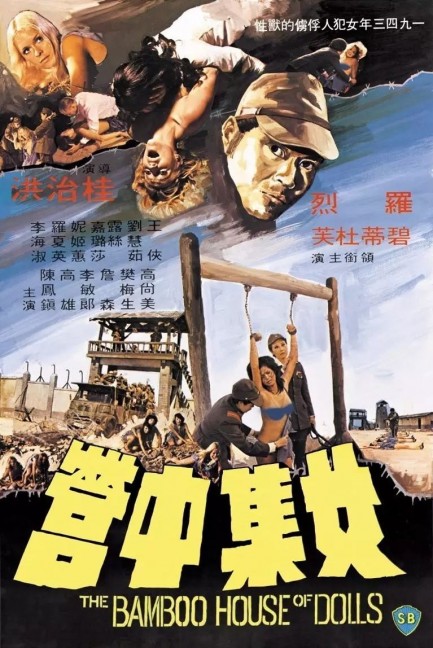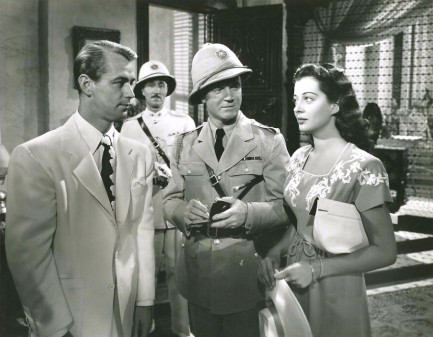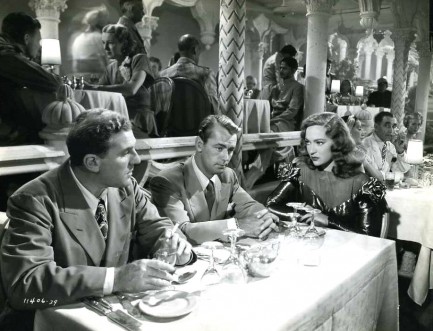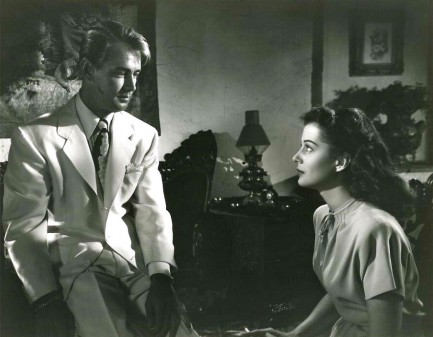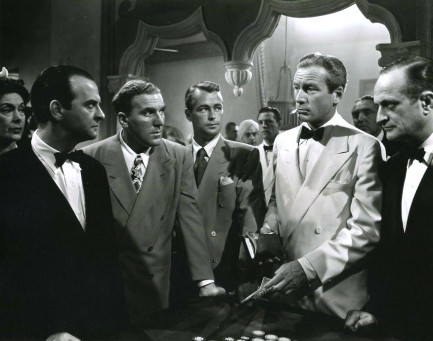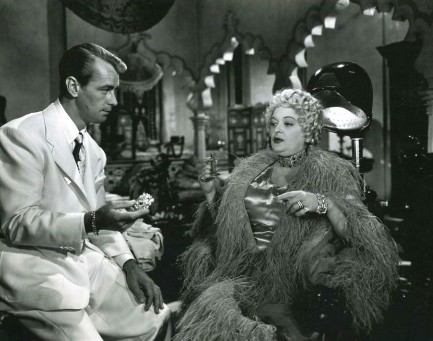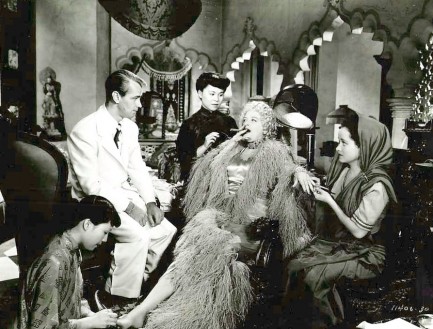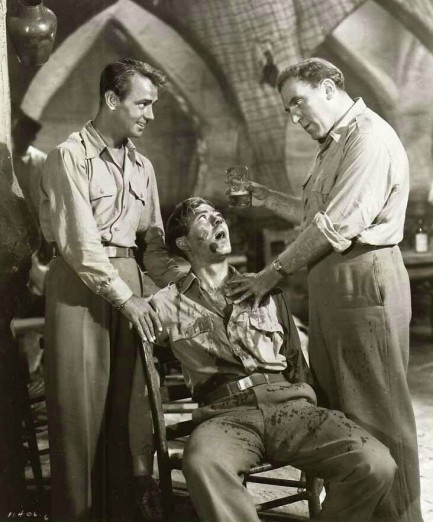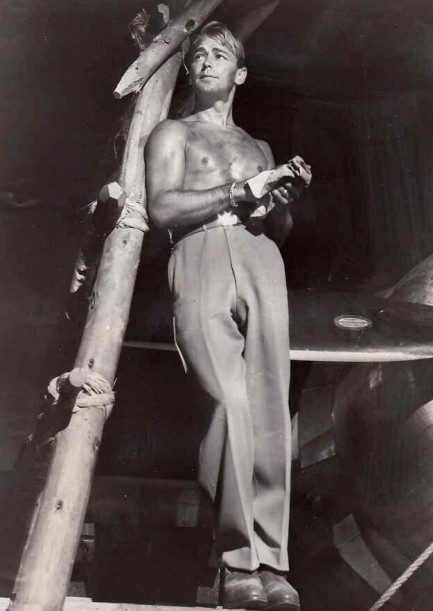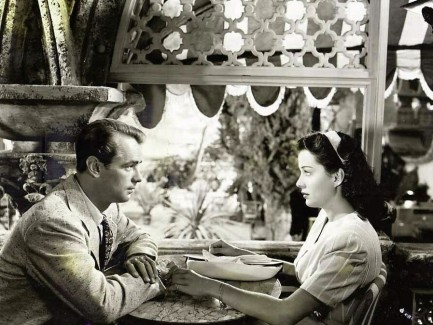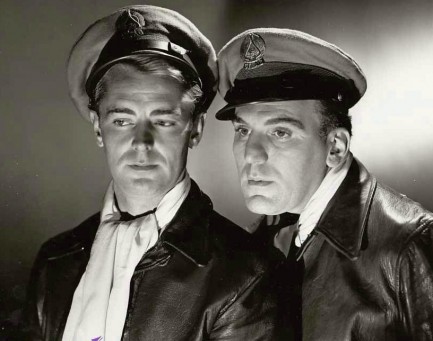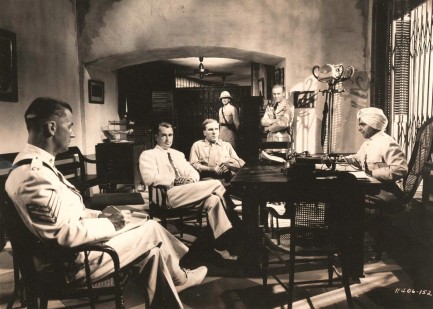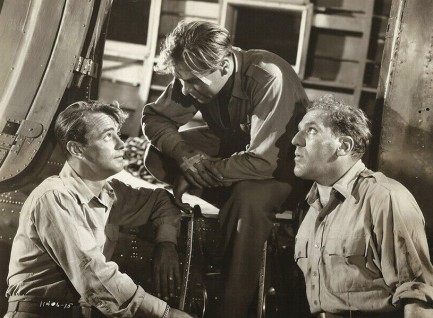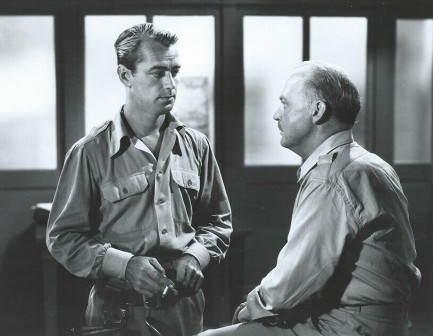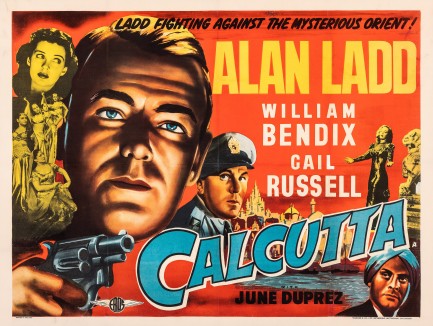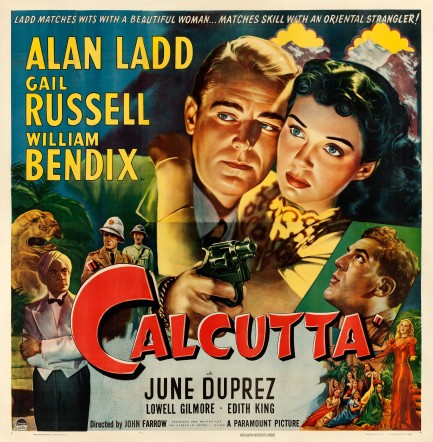 She makes sure a Pheasant time is had by all. 
We were attracted to the 1958 John Boswell thriller The Blue Pheasant not only because of the lovely cover art, and the tale's setting in East Asia and New Zealand, but because the title suggests that a bar plays a central role. We always like that, whether in fiction or film. The teaser text confirms it. The title refers to a fictional bar in Hong Kong. Irresistible. The book stars professional photographer, amateur painter, and rolling stone Chris Kent, who's at desperate ends and takes a job to travel from Hong Kong to far away Auckland to recover two Chinese scrolls that are the keys to a vast inheritance. Needless to say, there are other interested—and ruthless—parties. In addition there are three femmes fatales: Sally Chan, the bar dancer who puts Kent onto the job; Sonya Sung, whose family are the rightful owners of the misplaced scrolls (or are they?); and Ann Compton, mystery woman who becomes Kent's reluctant partner.
We were amused by how easily Kent's head was turned by all three women. He's tough, but he's also an all-day sucker. In trying to sort out why women are so confounding to him, there are numerous moments of, “Well, what's a guy to do when women are ________” By the end, though, he starts to wonder if he's the problem. Spoiler alert: pretty much. The actual caper is well laid out, with a lot of sleuthing and surveillance, a few moments of swift action, a suspicious Kiwi cop, a love/hate dynamic between Kent and Compton, and precise local color in both Hong Kong and Auckland.
We consider The Blue Pheasant to have been a worthwhile purchase. That was actually almost a given, considering the low price for the book (Seven dollars? Sold!). But our point is that you never know what you'll get with a writer as obscure as Boswell. Well, now we do. And we have his sequel, 1959's Lost Girl. We'll get around to reading that later.
Turning back to the cover for a moment, the example at top is one we downloaded from an auction site because the William Collins Sons & Co. edition, which is a hardback with a dust jacket, shows the wonderful art painted by British talent John Rose to best advantage. The edition we actually bought is a paperback from Fontana Books, and our scans of that appear below. They're fine, but the cleaner Collins version is frameworthy. We have another Rose cover at this link, and we'll be getting back to him again shortly.
 
 Cross country train thriller never quite reaches its destination. 
Our interest in Peking Express was wholly due to Corinne Calvet, who we've seen in promo images, but never speaking and moving. The movie, which was an update of 1932's Shanghai Express, is an overcooked spy adventure with cheesy, anti-commie filling, making for a creation that's hard to swallow. Joseph Cotten arrives in Shanghai as a World Health Organization specialist on a mission to operate on some bigwig general. On a Peking bound train he encounters two complications—his ex-flame Calvet, and attempted murder. The latter has to do with the smuggling of contraband inside WHO crates. Soon both Cotten and Calvet are held prisoner by ringleader Marvin Miller (playing a Chinese military officer named Kwon) who wants to engineer a hostage exchange. The movie ultimately portrays Miller as a money-grubbing bandit willing to betray wife, party, and country for personal gain. Threats and torture are his methods of persuasion, along with a hefty dose of general sneakiness. He spouts some of the worst dialogue ever, often starting with, “We Chinese...” But he doesn't get the worst line. We just about upchucked on this, spoken about Miller by a saintly priest played by Edmund Gwenn: “If only he had as much devotion to God's cause we would never have to worry about the world.” Really? Is that so? History says otherwise. To add insult to cognitive dissonance, the soundtrack contains some of the worst villain music imaginable. Composer Dimitri Tiomkin must have worn out an entire brass section recording it. We're fine, in principle, with the main plotline. The seemingly contradictory idea of a villain driven by a mix of entrepreneurial greed and communist doctrine is fertile. The crosscurrent of the WHO trying to save lives in a country where many are suspicious of its mandate struck us as relevant. But the operatic dimensions of the characters backfire to infantilise the movie's messages. We suspect that the average Christian would find Gwenn's missionary priest a pompous cardboard cut-out. The average communist would laugh the entire enterprise off as delusional b-grade propaganda. And the typical thief would judge Miller to be an incompetent boob. What would the typical Chinese person think? We can't say, but our special consulting critic Angela the sunbear, whose native habitat includes China, might be able to enlighten us. And finally, what do fans of Corinne Calvet think? We thought: What a waste.
 Thanks for throwing that China question my way, boys. I disliked the movie, and I extend an invitation to any who want to understand the complicated reasons why to discuss it with me over grubs and beetles. Thanks for throwing that China question my way, boys. I disliked the movie, and I extend an invitation to any who want to understand the complicated reasons why to discuss it with me over grubs and beetles.
        
 We mean her, not what's she sitting on. That thing is a deathtrap. 
Above: a really nice promo image of Chinese actress and nightclub performer Mitsouko, first published in the French magazine Cinémonde today in 1967. Mitsouko's real name was Maryse Guy, but under her pseudonym she appeared in ten films, including Agent 077 - Mission Bloody Mary and—briefly—Thunderball. She made a number of interesting promo images, so she'll probably show up here again.
 She must be more of a coffee person. 
This cover for The Bitter Tea of General Yen, which was came in 1949 from Popular Library, could have been painted by Rudolph Belarski. It's funny we're guessing, because we just said his art is instantly recognizable. Oh well. Usually he managed to place his signature where it wasn't easily covered by publishers, but not always. He was collaborating with Popular Library a lot during this period, and it looks like his work, but without his signature we can't say it's him—or really anyone else. But while the cover is officially by an unknown, it does fit into our collection of women being toted hither and yon on mid-century paperbacks. You can see those here. The novel was first published long before the paperback—way back in 1931. The story is set in China, and follows Megan Davis, who has traveled there during a time of civil war to marry a medical missionary. Turbulent circumstances lead to her being assaulted by a crowd and presumed dead. But she's actually rescued and placed under the protection of the anti-communist General Yen Tso-Chong of the book's title. The general plans to take the utmost care of Megan because her safe return will be a propaganda coup. But while in his villa he and Megan discuss their different cultures, religions, politics, and views of current events:
“In capturing the city of Nanking the troops of General Chen Chien got a little out of hand. War, you know, does not bring out the best qualities of tolerance and self-control; that is one reason why we Chinese are so unfitted for it.”
“But what was the incident?”
“A number of people were shot and some were killed, missionaries largely, Doctor Williams of the Nanking College, some ladies, the British Consul too, I believe.”
“Shot by Chinese?”
“By troops, yes.”
“But that is an outrage!” cried Megan, overwhelmed with anger. “We are not at war with you!”
“No? Well, at any rate your gunboats, in retaliation, fired on the unarmed, civilian population of Nanking, killing hundreds. But after all, why should you and I talk about it?”
“I don’t believe they fired on the civilian population, or if they did, they must have been forced into it.”
The General shrugged his shoulders.
That's a very appropriate exchange for our current times, but Megan and Yen's verbal jousting is interesting only to a point. In the end Zaring Stone is restrained enough to leave the politics unresolved, and brings the book to perhaps the only conclusion that fits. Now that you know the plot, you may be pondering the cover and asking yourself, "Who's the studly Anglo carrying the damsel in distress?" He doesn't exist in the narrative. It's General Yen who saves Megan. But Popular Library, we suppose, didn't want a Chinese man to star in that role on newsstands. Welcome to 1949.
In any case, Hollywood liked the 1931 hardback enough to adapt it into a 1933 film directed by Frank Capra, with the always amazing Barbara Stanwyck in the lead. We'd normally be leery of any movie made during that time depicting Chinese people (the title role is played by Danish actor Nils Asther), but you gotta give Stanwyck and Capra a shot, right? Like, it'd be neglectful of any cinephile not to watch it. So we'll let you know when/if we circle back to it.

 British adventurers get high in South Asia. 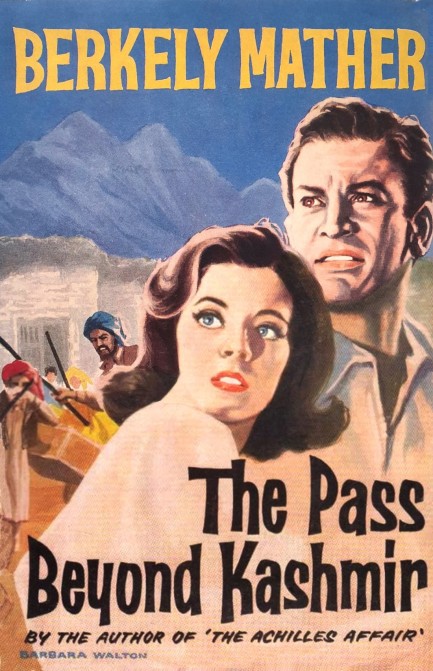
The cover you see above for Berkely Mather's, aka John Evan Weston-Davies', 1960 adventure The Pass Beyond Kashmir is one of the more pleasing we've come across. It's by Barbara Walton, a preeminent dust sleeve illustrator from the 1950s until around 2000. We've featured her a few times, such as here, here, and here, and this effort maintains her incredibly high standard. The scene depicted makes one think there's a major romantic subplot in the novel, but the love interest is in the book for maybe twenty pages. It isn't Walton's fault that the art gave us expectations that weren't met. It happens with covers sometimes. No romantic adventure here.
The story actually revolves around a sardonic and extremely determined ex-intelligence operative named Idwal Rees who gets caught up in a search for missing documents in the Himalayas that might reveal the location of an oil discovery. The action takes the form of a quest from Bombay-Mumbai into the high mountains, with new difficulties encountered in each stop by he and partner Smedley, servant Safaraz, and reluctant informer Poison. Each obstacle is followed by desperate problem solving, and hairsbreadth escapes. The aforementioned sort-of love interest, a nurse named Claire Culverton, is mainly a source of consternation for Rees and a focus for his chauvinism.
The set-up and framework are fine, but we felt that the book got bogged down with too much local color. Obviously, authors wish to impart that they've at a minimum done their homework, and at a maximum lived some version of what they're writing about, but there's also such a thing as narrative flow. We get it—Mather was really in India and Pakistan. He even served in the army there. But in our opinion he needed another pass from an editor to make for a better book. Still, as it resolved, it was decent, though anyone of Indian, Pakistani, or Chinese descent—or of good conscience—will bristle at the treatment meted out by Rees and other Brits. But you know that going in, right?
 Sneaky Chinese security ministry hatches scheme to infiltrate U.S. with costumed spies. 
We resisted this for a few days, but in the end we caved because we had a late night, which oh so often leads to an early morning, which in turn means we have a little more time than usual before our work days begin. Therefore: an image went viral over the weekend of a sun bear in a zoo in Hangzhou, China that many online commenters seem convinced was a human in costume. The image was a frame from a video. Chinese authorities dealt with the wave of outrage far too logically, we think. They could have simply said, “What would be the fucking point of that?” Instead they noted that, as the daytime high temperature was near 100 Fahrenheit when the video was made, a human in a thick fur costume, “would not last more than a few minutes before collapsing.” Uh huh.
But what if the costume were refrigerated? What if, in fact, the fake bear was a field test by the Ministry of State Security for a new scheme in which U.S. national parks would be infiltrated by spies in refrigerated sun bear costumes, who would gather crucial intel from Yellowstone, Grand Teton, and other wilderness areas where the most important Americans are well known to congregate? Obviously, sun bears are not native to North America, but the type of fur needed to make grizzly costumes is scarce due to global supply chain issues. Anyway, the bears are merely a precursor to more advanced costumes in the form of pot-bellied pigs. Once those pig costumes are perfected, they'll be used to infiltrate Congress, and they'll fit right in. Some will probably even get committee assignments.
On the other hand, in this, the year of our impatience 2023, one could watch the posted videos to their conclusions and see that the phony sun bear is actually a real bear (named Angela). But we do have to give the online virus vectors credit. Breaking down a video to single frames is the most efficient way to fool people. It's how the cops who attacked Rodney King avoided jail (well, that and racism): “Ladies and gentlemen of the jury, in motion Mr. King indeed seems to be helpless, but look! This freeze frame shows his raised arm, clearly an attempt to attack the police!” For those of you who have better things to do with your time than watch a sun bear video, below you see a few frames from seconds later in the same sequence. That's all bear is, folks.
  
 It's not comfortable, but it's reliable. 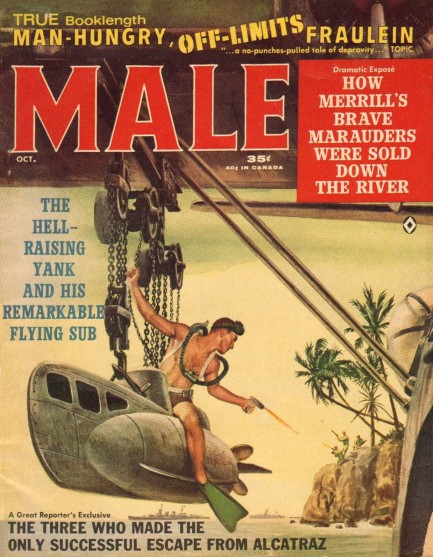
We're back to men's adventure mags today with an issue of Male from this month in 1962, with cover art by Mort Kunstler illustrating the tale, “The Hell-Raising Yank and His Remarkable Flying Sub.” We gave the story a read and it tells of Walter R. Cook, a U.S. soldier stranded in Burma who, with the aid of a local beauty (of course), finds and refurbishes an abandoned Catalina seaplane, which has attached to it a two man submarine. The sub was a type used during World War II that the operators rode like horses while breathing through scuba gear. Cook uses it to disrupt Japanese supply lines.
The story is a standard sort for an adventure magazine, but educational, since we'd never heard of rideable submarines. The illustration makes clear exactly what form it took. The magazine also offers stories set in China and New Zealand, and contains a detailed piece on an escape from Alcatraz, the very escape that inspired the Clint Eastwood film Escape from Alcatraz, involving the inmate Frank Morris, who may or may not have actually succeeded. The art throughout the issue is from the usual suspects—Charles Copeland, Samson Pollen, and Bruce Minney—and is tops as always. We have seventeen scans below.
 Hong Kong sexploitation epic isn't very good, but give it credit for ripping the scab off a historical wound. 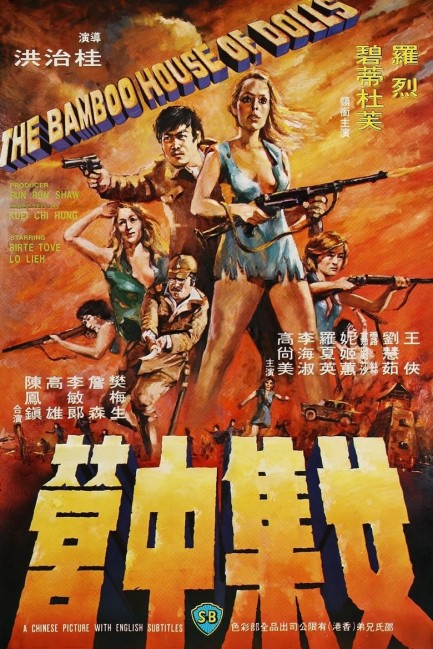
Above is a poster for the sexploitation flick Nu ji zhong ying, known in English as The Bamboo House of Dolls, and to get right to the heart of the matter, this one must have set Sino-Japanese relations back a few years. The film stars Danish actress Birte Tove as a nurse in Hong Kong who during World War II gets corralled along with her co-workers into Japanese Women's Concentration Camp 13, there to undergo various indignities before finally deciding that escape is her only option. You know the drill. Tove is the marquee attraction, but the film is largely cast with Hong Kong actresses such as Lee Hye-Sook, Hseih Wang, and others, which means that while the movie resembles entries in the women-in-prison sub-genre—with the scheming wardeness, lesbian sex, group showers, and half-cocked escapees made into examples of what not to do while in a tropical women's prison—the obvious historical context of Japan actually sexually abusing Chinese women during the war gives it an underlying grimness that's hard to ignore.
We suspect that if this were made today it would spark an international crisis, insults traded by high ranking officials on Twitter, and possibly diplomats kicked out of China and Japan, but 1970s filmmakers did not shy away from uncomfortable subject matter—and this is about as uncomfortable as it gets. That isn't the problem, though. Well, that isn't the problem for us. The objective problem is the movie is just bad. Legendary Hong Kong producers the Shaw Brothers (and by legendary we mean Run Run Shaw would be knighted in 1977) wanted to copy Jack Hill's women-in-prison movies The Big Bird Cage and The Big Doll House, but possibly overlooked the fact that setting such films in imaginary Central American hellholes as Hill did was worlds away from making the Japanese the villains in a historically laden sexual abuse epic. But what do we know? Run Run got knighted, not us. In any case, Tove's escape plan runs into some snags, but we won't reveal what those are, just in case you're in the mood for politically explosive titillation. Our advice? Give it a pass. Nu ji zhong ying premiered in Hong Kong today in 1973.  I get the feeling there's history here. Since I'm from Denmark, maybe I can I just leave? I get the feeling there's history here. Since I'm from Denmark, maybe I can I just leave?
 Calcutta is heavy on looks but light on substance. 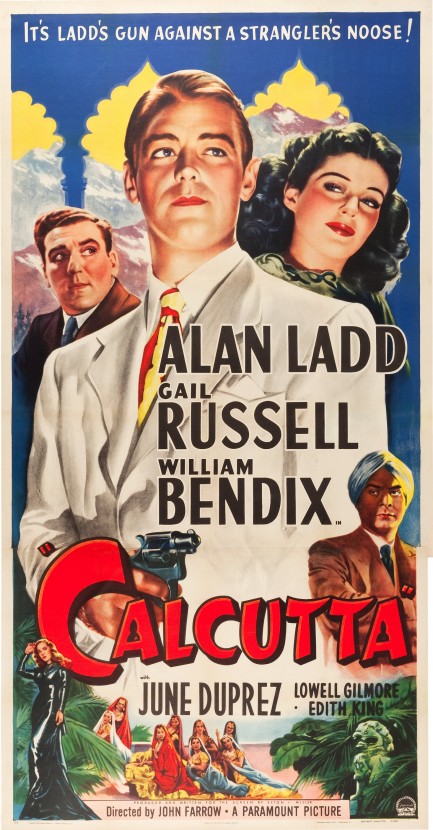
We'll tell you right out that Calcutta came very close to being an excellent movie, but doesn't quite get over the hump. It deals with a trio of pilots flying cargo between India and China on fictional China International Airways. The trio, Alan Ladd, William Bendix, and John Whitney, stumble upon a highly profitable international smuggling ring and quickly find that the villains play for keeps. Along with the fliers, the film has Gail Russell as Whitney's girlfriend, and June Duprez as a slinky nightclub singer. While the exotic setting marks the film as an adventure, it also fits the brief as a film noir, particularly in Ladd's cynical and icy protagonist.
As we said, the movie isn't as good as it should be, but there are some positives. Foremost among them is Edith King as a wealthy jewel merchant. She smokes a fat cigar, the masculine affectation an unspoken but clear hint of her possible lesbianism, and with a sort of jocular grandiosity simply nails her part. Another big plus is the fact that the miniature work (used in airport scenes), elaborate sets and props, and costumed extras all make for a convincing Indian illusion—definitely needed when a movie is filmed entirely in California and Arizona (Yuma City and Tucson sometimes served as stand-ins for exotic Asian cities, for example Damascus in Humphrey Bogart's Sirocco).
On the negative side, Calcutta has two narrative problems: the head villain is immediately guessable; and Russell is asked to take on more than she can handle as an actress, particularly as the movie nears its climax. Another problem for some viewers, but not all, is that the movie has the usual issues of white-centered stories set in Asia (or Africa). However, within the fictional milieu the characters themselves seem pretty much color and culture blind, which isn't always the case with old films. Even so, the phalanxes of loyal Indian servants, and the dismissiveness with which they're treated—though that treatment is historically accurate—probably won't sit well with a portion of viewers.
Here's what to focus on: Alan Ladd. He's a great screen presence, a solid actor in the tight-lipped way you often see in period crime films, and the filmmakers were even smart enough to keep him shirtless and oiled for one scene. We swear we heard eight-decade-old sighs on the wind, or maybe that was the Pulp Intl. girlfriends. They'd never seen Ladd before, but immediately became interested in his other films. We were forced to tell them he was a shrimpy 5' 6” and they were a bit bummed. But he had it—and that's what counted. His it makes all his films watchable, but doesn't quite make this one a high ranker. Calcutta had its official world premiere in London today in 1946.
 When someone says they're playing the role of their life they usually mean it figuratively. 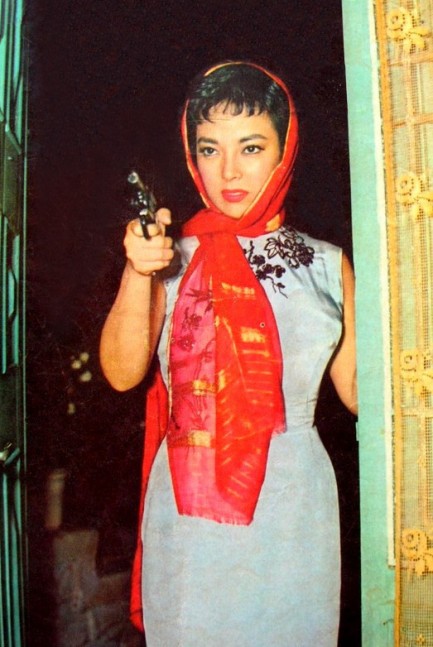
This nice photo shows actress and singer Li Xianglan, aka Li Hsiang-lan, and based on her name you'd guess she's Chinese, but she was actually Japanese and her real name was Yoshiko Yamaguchi. Early in her career the Manchukuo Film Association noted that she had grown up in Manchuria and was fluent in Mandarin, so they decided to hide her Japanese origin, which made it possible for her to star in Japanese films posing as Chinese. The purpose was to make films promoting certain Japanese ideologies, disseminated onscreen by someone the Chinese public saw as one of their own. In other words, at a time when Japan had invaded and occupied part of China, she starred in propaganda films. The ruse wasn't perfect. People Xianglan worked with figured out she was Japanese, but the Chinese public didn't know until 1946, when she was arrested after the Second Sino-Japanese War as a collaborator. She avoided execution only by revealing her Japanese identity to the Chinese court. It's a long and interesting story, but we won't get into it here. We'll note, though, that her tale didn't end there. She became a journalist in the 1950s using the name Yoshiko Otaka, and was elected to the Japanese parliament in 1974, where she served eighteen years. Quite an autobiography. The photo above was made to promote her 1957 film Shénmì měirén, aka Lady of Mystery. Indeed.

|
 |

The headlines that mattered yesteryear.
2003—Hope Dies
Film legend Bob Hope dies of pneumonia two months after celebrating his 100th birthday. 1945—Churchill Given the Sack
In spite of admiring Winston Churchill as a great wartime leader, Britons elect
Clement Attlee the nation's new prime minister in a sweeping victory for the Labour Party over the Conservatives. 1952—Evita Peron Dies
Eva Duarte de Peron, aka Evita, wife of the president of the Argentine Republic, dies from cancer at age 33. Evita had brought the working classes into a position of political power never witnessed before, but was hated by the nation's powerful military class. She is lain to rest in Milan, Italy in a secret grave under a nun's name, but is eventually returned to Argentina for reburial beside her husband in 1974. 1943—Mussolini Calls It Quits
Italian dictator Benito Mussolini steps down as head of the armed forces and the government. It soon becomes clear that Il Duce did not relinquish power voluntarily, but was forced to resign after former Fascist colleagues turned against him. He is later installed by Germany as leader of the Italian Social Republic in the north of the country, but is killed by partisans in 1945.
|

|
|

It's easy. We have an uploader that makes it a snap. Use it to submit your art, text, header, and subhead. Your post can be funny, serious, or anything in between, as long as it's vintage pulp. You'll get a byline and experience the fleeting pride of free authorship. We'll edit your post for typos, but the rest is up to you. Click here to give us your best shot.

|
|






 Thanks for throwing that China question my way, boys. I disliked the movie, and I extend an invitation to any who want to understand the complicated reasons why to discuss it with me over grubs and beetles.
Thanks for throwing that China question my way, boys. I disliked the movie, and I extend an invitation to any who want to understand the complicated reasons why to discuss it with me over grubs and beetles.























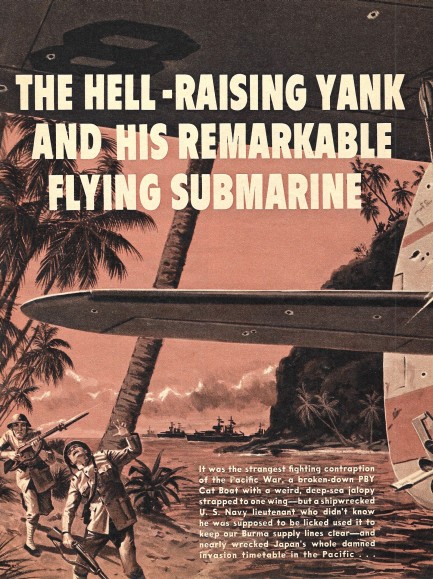
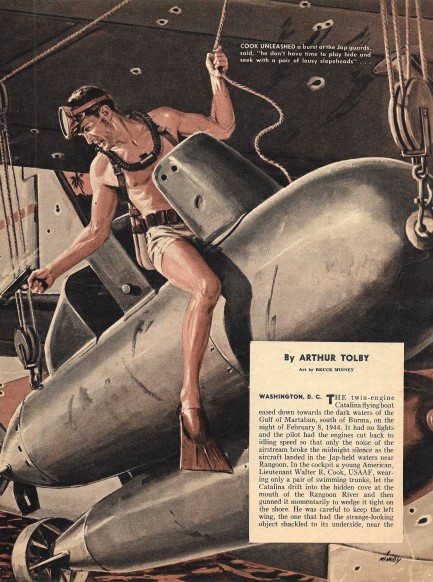
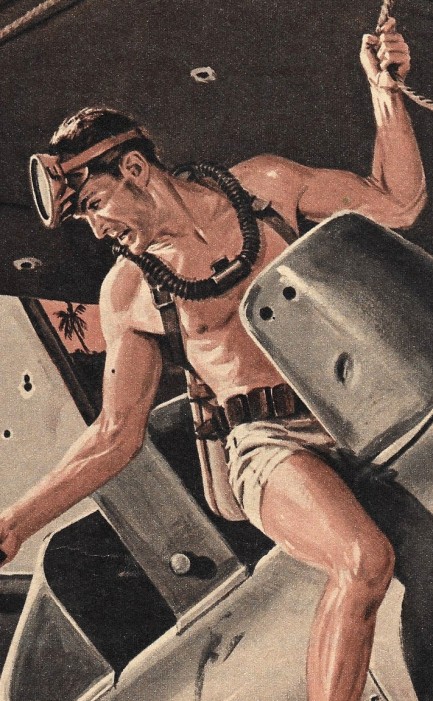
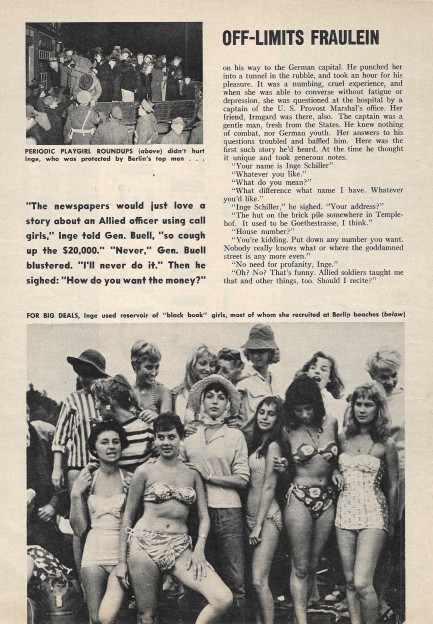
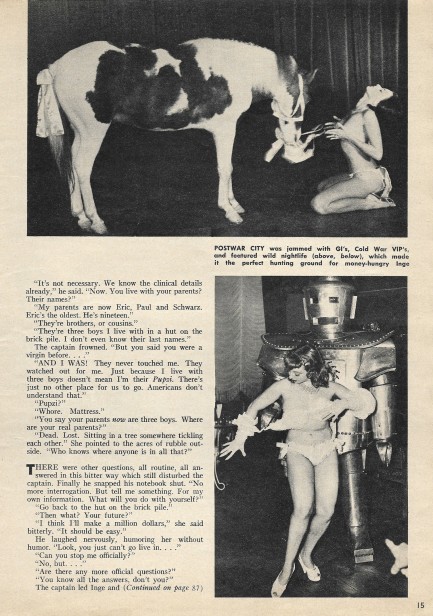
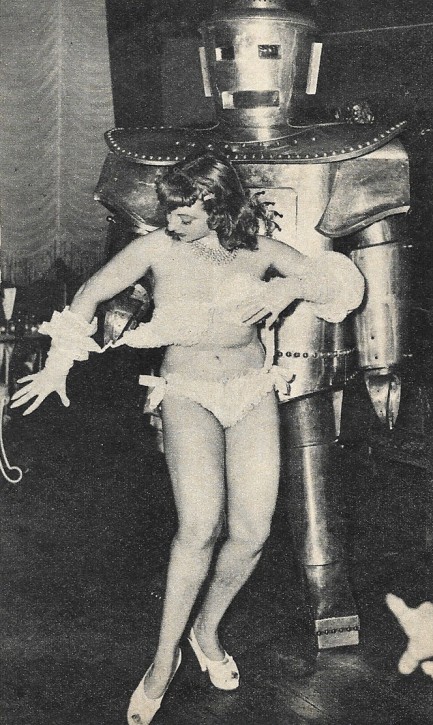
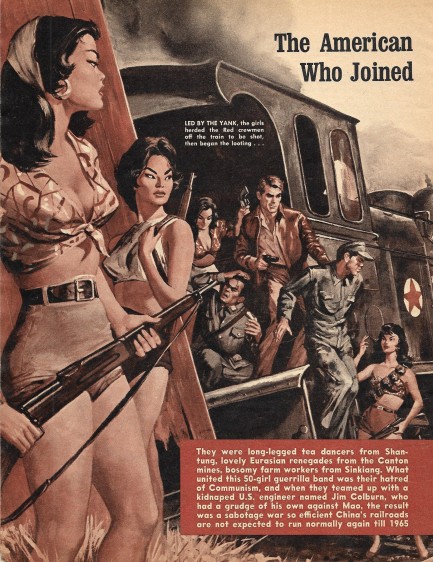
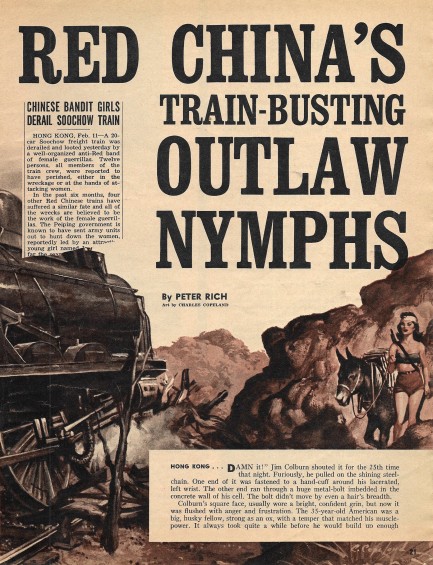

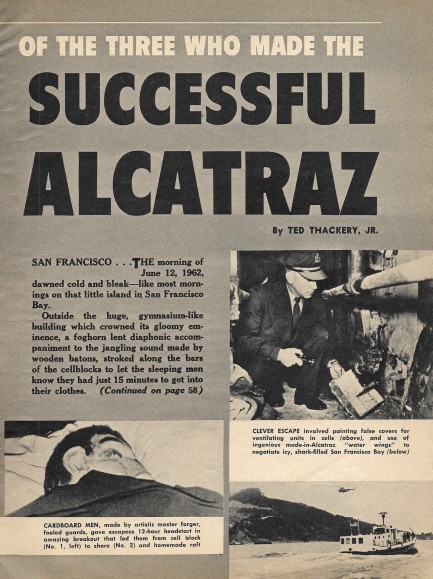
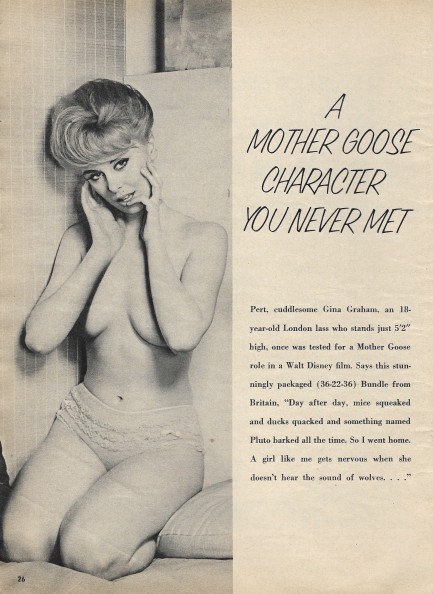

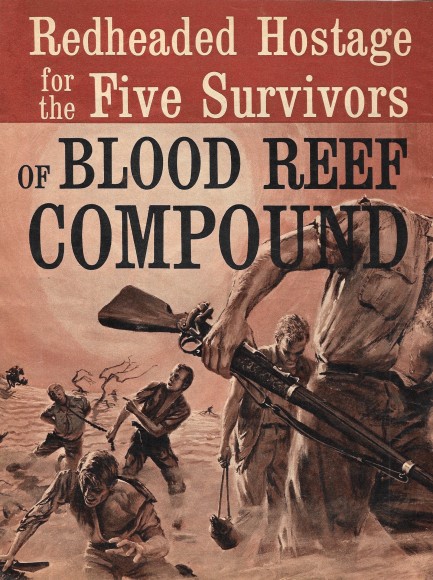
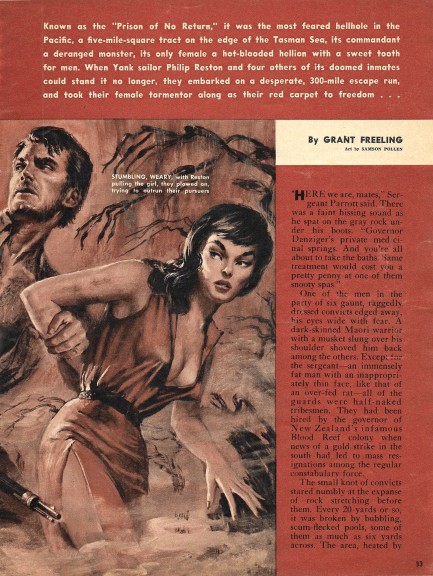
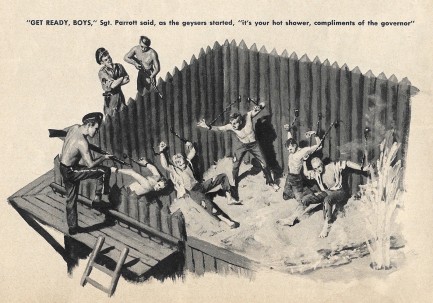
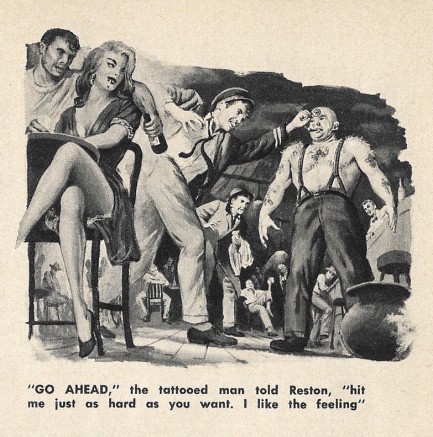


 I get the feeling there's history here. Since I'm from Denmark, maybe I can I just leave?
I get the feeling there's history here. Since I'm from Denmark, maybe I can I just leave?